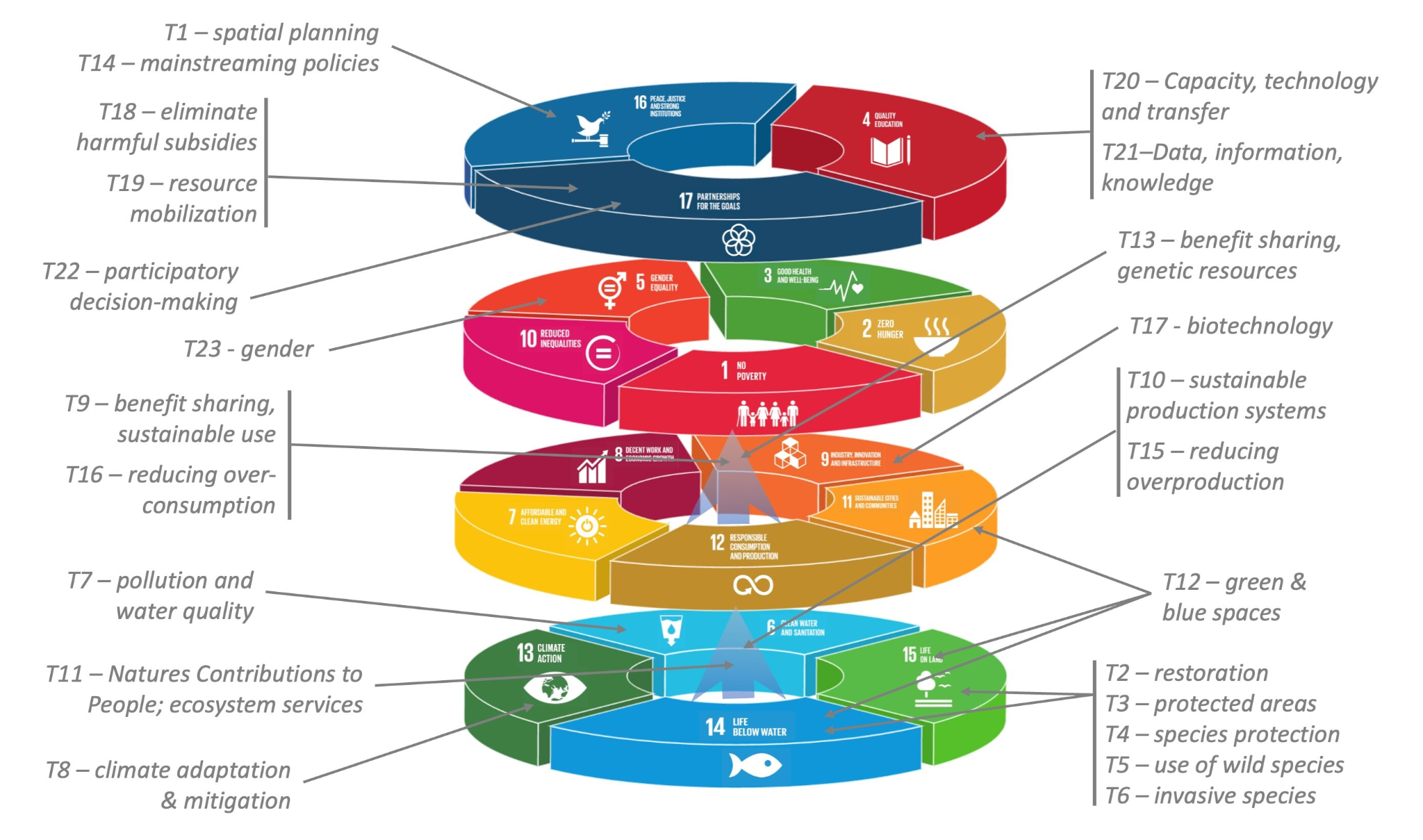Kunming-Montreal GBF Implications for India's Indigenous Tribes | 04 Apr 2024
For Prelims: Conference of Parties (COP15), Kunming-Montreal Global Biodiversity Framework, Sustainable Development Goals
For Mains: Kunming-Montreal Global Biodiversity Framework, Outcomes of COP 15, Environmental Pollution & Degradation, Indigenous Communities
Why in News?
A recent symposium organised by the University of Arizona highlighted concerns about the Kunming-Montreal Global Biodiversity Framework (GBF) and its potential impact, particularly on India's indigenous tribes.
What is the Kunming-Montreal Global Biodiversity Framework?
- About: The Kunming-Montreal GBF was adopted during the 15th meeting of the Conference of the Parties to the UN Convention on Biological Diversity in December 2022.
- It aims to support the achievement of sustainable development goals and build on previous strategic plans.
- The framework sets four goals for 2050 and 23 targets for 2030, covering planning, monitoring, reporting, finance, and capacity development.
- Target 3 of the GBF aims to increase protected areas to at least 30% of the world’s terrestrial area by 2030, compared to the current 16%.
- All parties (including India) are committed to setting national targets to implement the GBF.
- India's Progress:
- Target 3 - 30x30: India reports bringing 22% of its terrestrial area and 5% of marine and coastal areas under the Protected Area Network.
- While India shows progress in expanding protected areas, concerns arise over legal definitions and diversions of these areas for non-conservation purposes.
- India's Forest (Conservation) Amendment Act of 2023 expanded the definition of forest activities to include commercial ventures such as zoos and ecotourism, reflecting a commitment to sustainable development.
- However, the Supreme Court has issued directives that require any proposal for establishing zoos and safaris within forest areas(excluding protected areas) to receive prior approval from the court.
- Other Effective Area-Based Conservation Measures (OECMs): India identifies 14 categories of OECMs, including citizen-led initiatives, but the voluntary nature of their declaration raises questions about legal protection.
- Target 3 - 30x30: India reports bringing 22% of its terrestrial area and 5% of marine and coastal areas under the Protected Area Network.
What Could be the Implication of Forest Expansion on India's Indigenous Tribes?
- Implication: Forest Expansion under GBF targets may restrict traditional land use practices and livelihoods of indigenous communities relying on natural resources, leading to increased poverty and food insecurity among indigenous populations.
- About 84% of India’s national parks were established in areas inhabited by the indigenous peoples and meeting the GBF targets will threaten their existence.
- Related Recent Instances: Upgrading initiatives such as the Kumbhalgarh Wildlife Sanctuary, Rajasthan to a tiger reserve could displace 162 tribal villages.
- Expansion plans for the Nauradehi Sanctuary in Madhya Pradesh may affect 62 predominantly tribal villages.
- The notification for the Barak Bhuban Wildlife Sanctuary in Assam poses risks to Khasis, Dimasas, and other indigenous groups.
Note
This negative trend is also evident in other Southeast Asian countries where indigenous peoples face denial of basic rights in protected areas. Instances include denial of housing, health, education, electricity, and security to indigenous peoples in places like Indonesia's Ujungkulon National Park.
How India can Utilise Indigenous Tribes in Biodiversity Conservation?
- Preserving Cultural Heritage through Ecotourism: Supporting ecotourism initiatives led by indigenous communities, fostering cultural preservation and generating income.
- A standout example is the Wayanad tribal heritage villages in Kerala, where community-led eco-tourism projects have not only boosted income but also safeguarded wildlife and empowered local communities.
- Integrating Traditional and Professional Knowledge: Government can leverage traditional knowledge of indigenous tribes like the Khasi and Jaintia tribes of Meghalaya have a rich tradition of protecting "sacred groves( areas of natural vegetation that are preserved through local taboos and sanctions)."
- Integrating this knowledge with scientific surveys by institutions like the Wildlife Institute of India (WII) can create comprehensive conservation plans.
- Promoting Co-Management Models: Expanding co-management models like the West Bengal Joint Forest Management (JFM) program where indigenous communities work alongside forest departments to manage protected areas. This leverages their knowledge and fosters a sense of ownership.
Way Forward
- Free, Prior, and Informed Consent: The Indian government uphold Upholding Free, Prior, and Informed Consent (FPIC) which is a mandatory requirement before establishing protected areas on tribal lands under the Panchayats (Extension to Scheduled Areas) Act,1996 .
- Social Impact Assessment: Conducting social impact assessments to understand the potential impact of protected area expansion on existing livelihoods.
- Following the example of Namibia's Communal Conservancy program, co-management models can be established for protected areas.
- These models grant indigenous communities a stake in wildlife management, incentivizing sustainable practices.
- Aligning Policies with International Standards: India must align its national policies with United Nations Declaration on the Rights of Indigenous Peoples (UNDRIP) principles ensuring that indigenous rights and knowledge systems are respected along with sincere conservation efforts.
|
Drishti Mains Question: Q. Assess the potential threats posed by Kunming-Montreal GBF Implications for India's Indigenous Tribes. |
UPSC Civil Services Examination, Previous Year Questions (PYQs)
Prelims
Q. “Momentum for Change: Climate Neutral Now” is an initiative launched by (2018)
(a) The Intergovernmental Panel on Climate Change
(b) The UNEP Secretariat
(c) The UNFCCC Secretariat
(d) The World Meteorological Organisation
Ans: (c)

